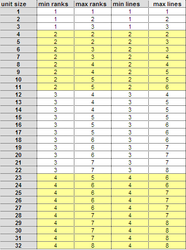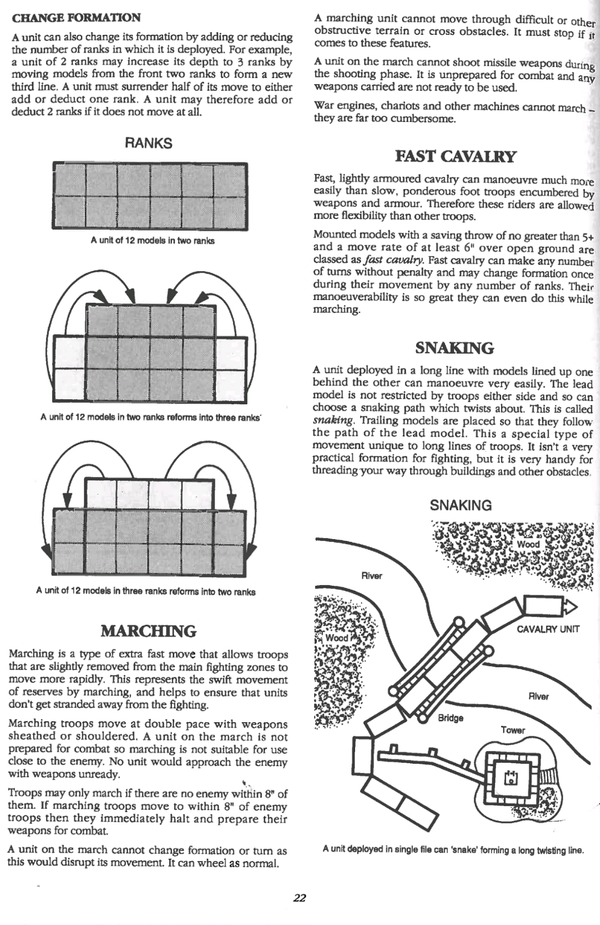Formation
Formation in Dark Omen
All models in the unit must be perfectly aligned in base contact with each other and face the same direction.
The maximum/minimum number of ranks and files that a unit may have depends on number of models in unit. For more details pls. see table.
Unit has 2 formation limitations for ranks and files:
Long formation - maximum ranks. Can be set by pressing +
Wide formation - maximum files. Can be set by pressing -
Unit always auto-reforms to Wide formation as soon as it receives attack order.
units in Long formation
units in Wide formation
There should not be any gaps in first ranks and when a model from first ranks dies it is replaced by any model from the rear ranks.
Formation in combat
Both in DO and TT only first ranks of unit may shoot with ranged weapons. For bows it is first two ranks. For crossbows and/or firearms only first rank. Thus, widest formation for ranged unit is the most efficient one.
Since there is Line of sight mechanic in DO, size of unit formation affects unit stealth. Tightest and the most compact formation is more suitable for hiding behind large objects such as buildings or hills.
Based on previous in-game observations, wide formation does give combat bonus in melee over long formation. According to numerous tests with 2 equal units, the unit which had long formation lost combat round most of the time and was forced to retreat. It may be linked to full rank rule in TT.
This requires further testing to define combat bonus from wide formation more precisely.
In TT rules unit with more than one full ranks (4 models rank) receives bonus during combat Round score calculation





